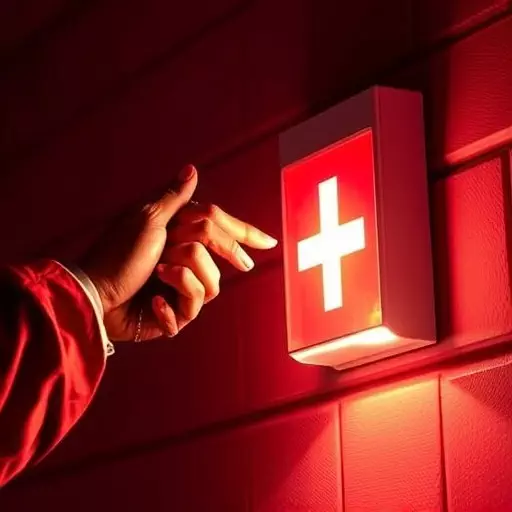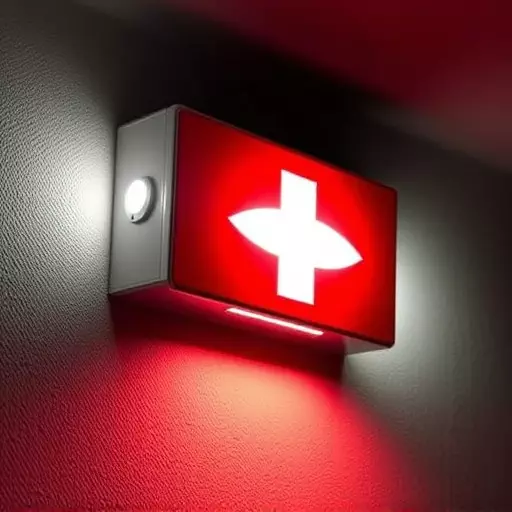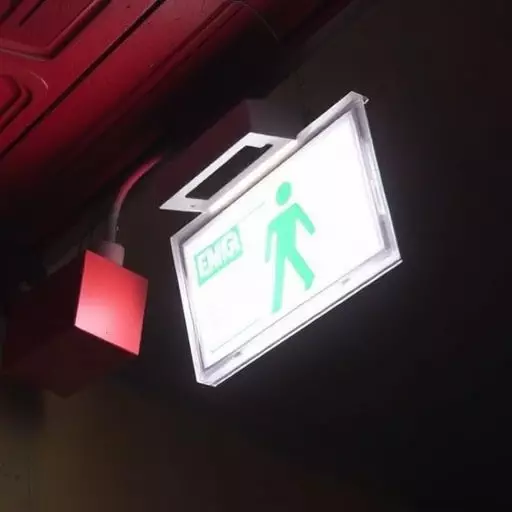Maintaining reliable emergency light systems in Spring Lake is vital for safety during power outages or emergencies. Regular inspections and prompt recognition of issues like flickering lights, delayed activation, or faulty batteries are crucial to prevent failures. The repair process requires the right tools and a structured method, from visual inspections to voltage testing. Basic repairs can often be done by homeowners, while complex issues demand professional expertise. Prioritizing safety, regular maintenance, and awareness of signs ensure efficient emergency lighting in Spring Lake properties, minimizing risks during critical situations.
Spring Lake residents often rely on reliable emergency lighting for safety during power outages. However, these systems aren’t immune to issues. This comprehensive guide delves into the intricate world of emergency light repair, Spring Lake’s essential safety net. From understanding the basics of these systems and identifying common problems to mastering the repair process and ensuring safe maintenance, this article equips you with knowledge to address emergency light malfunctions efficiently. Learn the signs an emergency light needs repair and transform yourself into a proactive contributor to your community’s safety.
- Understanding Emergency Light Systems: A Comprehensive Overview
- Common Issues and Signs of an Emergency Light Malfunction
- Tools Required for Efficient Emergency Light Repair
- Step-by-Step Guide to Diagnosing the Problem
- Repair Techniques: From Simple Fixes to Complex Solutions
- Ensuring Safety During Emergency Light Maintenance
- Regular Maintenance Tips to Prevent Future Repairs
Understanding Emergency Light Systems: A Comprehensive Overview

Understanding Emergency Light Systems is paramount for anyone involved in maintenance or repairs in Spring Lake or surrounding areas. These lighting systems are designed to provide immediate, high-intensity illumination during power outages or emergencies, ensuring safety and visibility. They often operate independently of the main electrical grid, relying on batteries or alternative power sources.
The emergency light repair process involves a thorough inspection to identify issues. Signs an emergency light needs repair include flickering lights, delayed lighting activation, dimming, or complete failure to illuminate. Regular maintenance checks are crucial to prevent unexpected failures, ensuring these vital safety systems remain operational when they’re needed most.
Common Issues and Signs of an Emergency Light Malfunction

Many commercial and industrial facilities rely on robust emergency lighting systems to ensure safety during power outages or emergencies. However, these lights can develop issues over time, leading to critical failures when they’re needed most. Recognizing common problems and signs of malfunction is crucial for prompt emergency light repair in Spring Lake.
Some typical issues include flickering lights, prolonged delays in activation, dimmed or faded bulbs, and non-functional battery backup systems. If you notice any of these signs, it’s important to engage in the emergency light repair process immediately. Proactive maintenance can prevent more severe, even life-threatening situations, ensuring that your lighting system remains reliable when it matters most.
Tools Required for Efficient Emergency Light Repair

When it comes to Emergency Light Repair in Spring Lake, having the right tools is essential for a swift and efficient process. The first step in any repair job is identification; thus, one must be able to recognize the signs that indicate an emergency light’s malfunction. Common symptoms include flickering lights, prolonged darkness after a power outage, or lights that fail to illuminate when the switch is on. Once identified, the repair process can begin.
For effective Emergency Light Repair, several tools are indispensable. These include a voltage tester to check for power supply, a multimeter for measuring electrical currents and voltages, flashlights for illumination during the repair, and ladder access equipment to reach high fixtures. Additionally, having a toolkit with screwdrivers, pliers, and wire strippers ensures that minor repairs can be attended to promptly on-site. These tools empower professionals or homeowners to address emergency light issues quickly, ensuring safety and minimal disruption in Spring Lake.
Step-by-Step Guide to Diagnosing the Problem

When it comes to emergency light repair in Spring Lake, a systematic approach is key. Start by inspecting the light for any visible damage or loose connections. Check all wiring for signs of fraying, corrosion, or broken strands. These could be indicators of a faulty connection causing the emergency light to malfunction. During this initial assessment, pay close attention to the bulb itself; a burnt-out bulb is often the culprit behind flickering or non-illuminating lights.
Next, use a multimeter to test the power supply and ensure there’s adequate voltage reaching the fixture. Compare these readings with the manufacturer’s specifications for optimal performance. If voltage levels are off, it could signal a problem with the circuit breaker or power source. Documenting each step of this emergency light repair process will not only help in troubleshooting but also facilitate effective communication with professional repair services if further assistance is required.
Repair Techniques: From Simple Fixes to Complex Solutions

When it comes to emergency light repair in Spring Lake, understanding the repair techniques involved can be as illuminating as the lights themselves. Simple fixes, such as replacing burnt-out bulbs or tightening loose connections, are common and straightforward. Homeowners and property managers can often handle these tasks themselves with a bit of know-how and the right tools. However, complex solutions like repairing faulty wiring or updating outdated emergency lighting systems require professional expertise.
The signs that an emergency light needs repair are essential indicators to watch for. Flickering lights, delayed responses, or complete failure to activate during a power outage suggest underlying issues. Regular maintenance checks can help identify problems early on, preventing more severe and costly repairs. By knowing both the basic and advanced repair techniques and being aware of potential issues, you’ll be better equipped to maintain reliable emergency lighting in your Spring Lake residence or commercial property.
Ensuring Safety During Emergency Light Maintenance

When conducting emergency light repair in Spring Lake or any location, safety should always be the top priority. Before beginning the repair process, it’s crucial to turn off the main power supply to the lighting system to prevent any accidents or injuries. This step is an essential part of the emergency light repair process and should not be skipped. Once powered down, thoroughly inspect the light for any signs of damage, corrosion, or wear and tear. Look for dimming or flickering lights as potential indicators that the fixture may need repair or replacement.
Proper safety gear, including gloves, eye protection, and non-slip footwear, is vital during maintenance. As you assess the situation, be mindful of any hazardous conditions, such as loose wiring or broken components, which could pose risks. By following these safety measures, you can ensure a smoother repair process and minimize potential dangers, especially in high-traffic areas where quick response times are critical.
Regular Maintenance Tips to Prevent Future Repairs

Regular maintenance is key to preventing costly and inconvenient emergency light repairs in Spring Lake. By implementing a few simple practices, you can significantly extend the lifespan of your emergency lighting systems. One of the first steps is to establish a consistent inspection routine. Look for signs of damage or corrosion, especially in older units. Check that all bulbs are functioning correctly and replace any that appear dim or burnt out.
Additionally, keeping the light fixtures clean is essential. Dust and debris can accumulate over time, blocking the path of light and reducing efficiency. Use a soft cloth to wipe down the exterior and ensure the lenses are clear. Regular maintenance also involves testing the backup power source. Check batteries and ensure they are charged and in good condition. Testing should be done periodically, especially before winter or high-use periods, to avoid unexpected failures when emergency lights are most needed.


